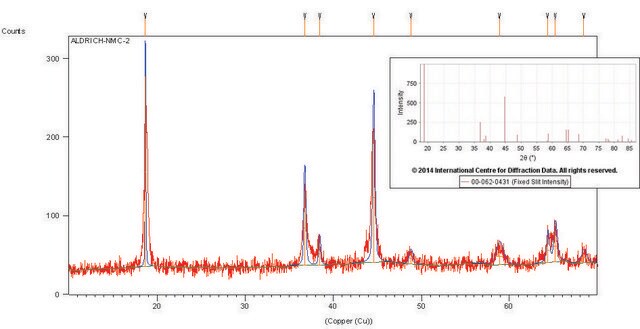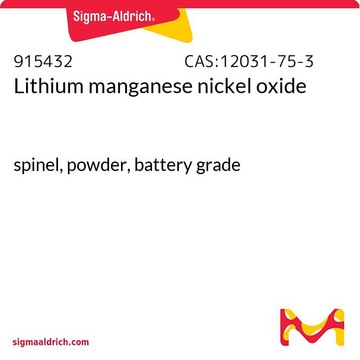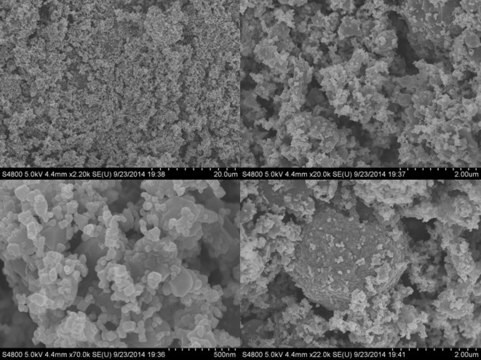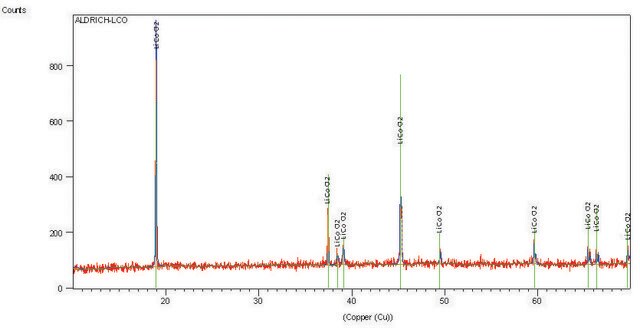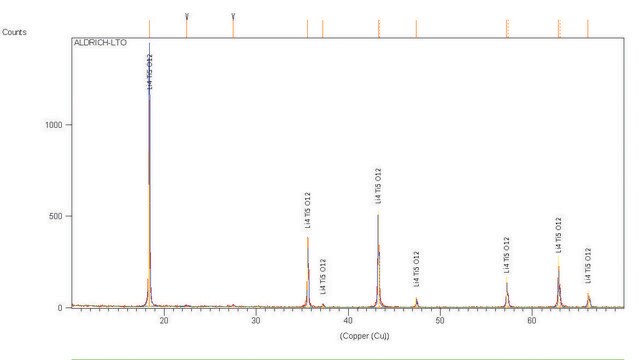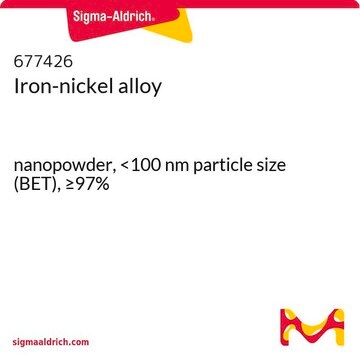725110
Lithium manganese nickel oxide
spinel, powder, <0.5 μm particle size (BET), >99%
Synonim(y):
LMNO
About This Item
Polecane produkty
klasa czystości
battery grade
Poziom jakości
Próba
>99%
Postać
powder
masa cząsteczkowa
Mw 365.38 g/mol
skład
Li2Mn3NiO8
charakterystyka ekologicznej alternatywy
Design for Energy Efficiency
Learn more about the Principles of Green Chemistry.
sustainability
Greener Alternative Product
wielkość cząstki
<0.5 μm (BET)
mp
>290 °C
Zastosowanie
battery manufacturing
kategoria ekologicznej alternatywy
Powiązane kategorie
Opis ogólny
Cechy i korzyści
Li-Batteries, material for electrodes design and manufacturing
Informacje prawne
produkt powiązany
Hasło ostrzegawcze
Warning
Zwroty wskazujące rodzaj zagrożenia
Zwroty wskazujące środki ostrożności
Klasyfikacja zagrożeń
Carc. 2 - Skin Sens. 1
Kod klasy składowania
11 - Combustible Solids
Klasa zagrożenia wodnego (WGK)
WGK 3
Temperatura zapłonu (°F)
Not applicable
Temperatura zapłonu (°C)
Not applicable
Wybierz jedną z najnowszych wersji:
Masz już ten produkt?
Dokumenty związane z niedawno zakupionymi produktami zostały zamieszczone w Bibliotece dokumentów.
Klienci oglądali również te produkty
Produkty
Increasing fuel costs and concerns about greenhouse gas emissions have spurred the growth in sales of hybrid electric vehicles (HEVs) that carry a battery pack to supplement the performance of the internal combustion engine (ICE).
Nanomaterials for Energy Storage in Lithium-ion Battery Applications
Nanomateriały do magazynowania energii w akumulatorach litowo-jonowych
Professor Qiao’s laboratory lays out recent advances in conversion type lithium metal fluoride batteries. This review explores key concepts in developing electrochemically stable microstructures for wide Li-ion insertion channels.
Nasz zespół naukowców ma doświadczenie we wszystkich obszarach badań, w tym w naukach przyrodniczych, materiałoznawstwie, syntezie chemicznej, chromatografii, analityce i wielu innych dziedzinach.
Skontaktuj się z zespołem ds. pomocy technicznej